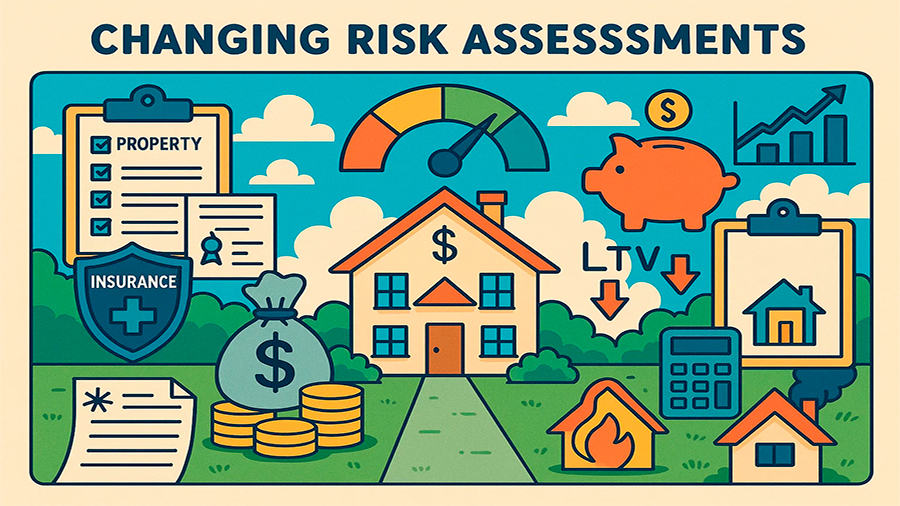How Loans Are Adapting to an Ageing Population
The world is getting older, and finance is catching up. In many countries, people over 60 now make up the fastest-growing slice of the population. That shift changes how lenders design products and how borrowers use them. Yesterday’s model assumed steady salaries and decades to repay. Today, many customers are retired, semi-retired, or earning in bursts from part-time work, rental income, or investments. Lenders are adjusting — not by lowering standards, but by rethinking affordability, timelines, and purpose. It’s less about age on a form and more about how money comes in, how it’s protected, and what a good life looks like after work.
The Shift in Borrower Profiles
For years, the “ideal” applicant sat in mid-career, with predictable paychecks and time to run down a 25- or 30-year mortgage. That picture is fading. People live longer, work later, and juggle complex roles: caregiver, part-time professional, landlord, volunteer, small-business owner. Many older borrowers have lower monthly income but stronger balance sheets — paid-off homes, investment portfolios, or steady pensions. That mix makes risk different, not necessarily higher. Lenders who once filtered by age are learning to read the whole story: assets, cash buffers, health of the property, and realistic exit plans. Credit decisions are shifting from “How old are you?” to “How resilient are your cash flows?”
Products Designed for Later Life
Product design is moving beyond one-size-fits-all. Shorter-term mortgages, flexible home-equity lines, and installment loans with tailored pacing are now common. Reverse-mortgage style products are more transparent than a decade ago and often come with counseling and cooling-off periods. Unsecured options are being reshaped too: lower limits, clearer pricing, and features like payment holidays or interest-only windows for defined periods. What ties these together is a simple idea — match repayments to real income patterns. A retiree who draws a quarterly annuity, for example, can set quarterly payments. Someone with dividend income might prefer seasonal lump sums. Good lenders design around that rhythm instead of forcing a monthly mold.
Changing Risk Assessments
Traditional scoring leaned on wages and tenure. That misses the texture of later-life finance. New models weigh pension eligibility, investment income consistency, property condition, insurance coverage, and emergency reserves. Underwriting has also added guardrails: conservative loan-to-value caps, stress tests for rate rises, and clearer plans for downsizing or sale if needed. The result is a more nuanced view: lower default risk when assets are strong, but a hard line on over-borrowing. The best assessments ask two questions: can the borrower pay in a typical month, and can they still pay when life throws a curve — a medical bill, a roof repair, a market dip?

Why Demand Is Growing
Debt in later life isn’t always distress; often it’s a choice. People borrow to age in place, remodel bathrooms for safety, or fund efficient heating that cuts bills. Some start small ventures, consult, or back a family member’s business. Others consolidate scattered debts into one predictable plan. Travel, education, and home tech show up too — living longer means planning for a full, active stage, not just covering basics. The key shift: borrowers want control and clarity. They’ll accept a smaller facility with clean terms over a bigger one with strings. And they’ll pay a little more for flexibility if it means fewer surprises.
Designing Repayments for Variable Income
Fixed salaries are less common past 60, so repayment needs to bend without breaking. We’re seeing stepped plans that start interest-only, then switch to amortizing; bi-monthly or quarterly schedules aligned to pension cycles; and auto top-ups tied to dividend dates. Some loans add a safeguarded “pause” — a limited, pre-approved deferral for emergencies that doesn’t wreck credit. Others include automatic curbs: if investment income falls beneath a threshold, payment size shrinks temporarily and the term extends. These are not loopholes; they’re shock absorbers. The goal is to prevent a temporary squeeze from becoming a default, while keeping the total cost honest and visible.
The Emotional Side of Borrowing Later in Life
Numbers don’t capture everything. For some, borrowing feels like freedom — funding a kitchen they’ll enjoy for years or a trip with grandkids while everyone’s healthy. For others, debt triggers worry about leaving obligations to heirs or draining savings too fast. That’s why responsible lenders bundle advice with credit: goal-setting sessions, affordability check-ins, plain-language disclosures, and realistic projections that show best- and worst-case paths. Good service here is slow and human. People want to understand trade-offs: “If I borrow this much, how does it affect my estate?” “If rates rise two points, what changes?” Clear answers build confidence — and prevent regret.
Digital Access and Inclusion
Older borrowers use digital tools, but unevenly. Many are happy with e-signatures and app notifications; others prefer mail and phone calls. Hybrid service is becoming the norm: online applications with a live agent on standby, video calls for document walkthroughs, and branch appointments for final checks. Accessibility matters — readable fonts, high-contrast screens, and simple dashboards that show balance, rate, next payment, and a big red button for help. Security matters even more. Extra verification steps and scam education reduce fraud without shutting people out. The aim is dignity: tech that empowers, not tech that confuses.

Family Guarantees and Intergenerational Finance
Money across generations is part of the story. Parents help adult children with deposits; children co-sign or act as guarantors for a parent’s loan. Some products formalize this with shared equity arrangements or capped guarantees that fall away after on-time payments. Clear agreements protect relationships: who owns what share, what happens on sale, and how to handle care costs down the line. Lenders are learning to recognise family dynamics without taking sides — verify capacity, document consent, and keep everyone informed. Done well, intergenerational finance turns a family plan into a stable, affordable structure rather than a risky handshake.
Challenges for Lenders
Serving an ageing market is not just about new products — it’s about discipline. Medical shocks, caregiver duties, and market swings can upend budgets. Mis-selling risks are real, and so is elder abuse. Strong policies help: cool-off periods, third-party reviews for complex loans, spot checks for coercion, and escalation paths when something feels off. Portfolio management matters too: keep loan-to-value sensible, avoid interest-only forever, and stress-test the book against rate spikes and price dips. Profit is fine; pressure tactics are not. The institutions that balance both will win trust — and business.
Looking Ahead: Innovation and Regulation
The pipeline is busy. Expect more purpose-built credit: “age in place” bundles that pair home-equity lines with retrofit services; insurance-linked features that cut payments after certain health events; and clean exit options that avoid panic sales. Regulators are tightening clarity rules and pushing for advice standards, especially on lifetime and equity-release style loans. Data will help — with consent, lenders can see income rhythms and craft smarter terms — but privacy must lead. The destination is simple: credit that supports independence without burying people in fine print. If the industry gets that right, older borrowers will have real choices, not just louder ads.
Conclusion
An ageing population isn’t a problem to solve; it’s a reality to design for. Loans are adapting — shorter terms where they make sense, flexible pacing, better safeguards, and service that respects how people actually live and earn in later life. The best lending now looks more like a partnership than a transaction: clear goals, honest costs, and support when life zigzags. Done well, credit can fund safer homes, small ventures, and time that’s spent on what matters. Done poorly, it can turn calm years into a grind. The difference is design plus care — and lenders who remember that longevity should feel like freedom, not paperwork.

